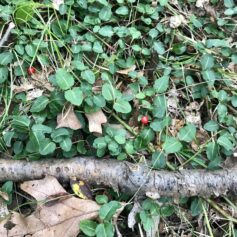Description
GRASS PINK ORCHID
The charming grass pink orchid (Calopogon tuberosus) is native to much of eastern North America, where it grows in a number of moist or wet habitats. It is adaptable to cultivation and makes an excellent container plant. Grass pinks typically produce pink flowers, but an occasional white flower is not uncommon.
HABIT
Grass pink orchids grow from a bulb-like corm. The plant has a narrow, green, grass-like leaf and a single, slender stem which produces two or more flowers. These are arranged alternately in a loose cluster and open sequentially, beginning at the bottom. Most of the flowers are various shades of pink, but white flowers will occur uncommonly. Each year, the corm is depleted while simultaneously producing a new corm, from which the next year’s plant will arise.
NATURAL HABITAT
Grass pink orchid is classified as an obligate (OBL) wetland plant, meaning it is generally restricted to sites that provide continually moist or wet situations, especially early in the growing season. Natively, it grows in moist meadows, wet prairies, fens, and Sphagnum bogs.
ETYMOLOGY
The name “Calopogon” comes from the Greek words meaning “beautiful beard” – a reference to the yellow-tipped hairs on the lip of the plant. The name “tuberosus” is a reference to the plant’s underground stem.
The common name (Grass Pink) is a reference to the flower color and the plant’s long, grass-like leaves. Other common names include Tuberous Grasspink and Tuberous-Rooted Calopogon.
— Adirondacks Forever Wild.
RANGE
Grass pink orchid is native to much of eastern North America, from the Canadian Maritimes south to Florida, west along the Gulf Coast of Texas, and north to Kansas, Iowa, and Minnesota.
ASSOCIATES
In bogs, grass pink orchid associates with roundleaf sundew (Drosera rotundifolia), spoonleaf sundew (Drosera intermedia), rose Pogonia (Pogonia ophioglossoides), and northern pitcher plant (Sarracenia purpurea). In wet sand flats with Aletris farinosa (colic root), Drosera rotundifolia (round-leaved sundew), Euthamia graminifolia (grass-leaved goldenrod), Osmunda regalis (royal fern), Polygala cruciata (cross-leaved milkwort), Spiranthes cernua (nodding lady’s tresses), and Xyris torta (slender yelloweyed grass).







